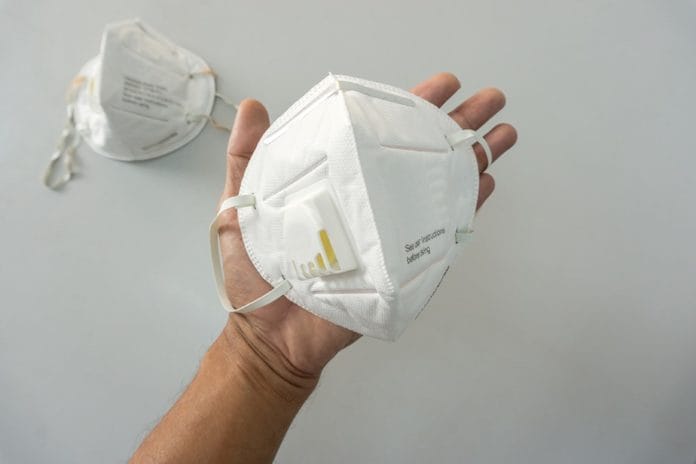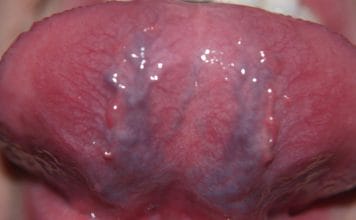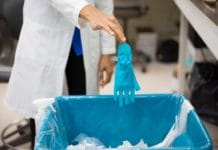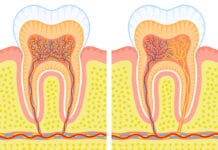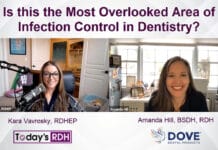Editor’s Note: Information about COVID-19 is changing on a daily, sometimes hourly, basis. We have made every attempt to ensure this article is up-to-date at the time of original article publication (June 20, 2020), but with the rapid changes occurring, some information may have changed since publication. Please visit coronavirus.
Masks have long been a part of the required and recommended personal protective equipment mandated by the Occupational Health and Safety Administration (OSHA) for dental professionals. However, until March 2020, when the COVID-19 global pandemic was declared, not much contemplation among dental professionals was really had in regards to the subject. Hopefully, all dental professionals were following the standards put in place by OSHA prior to the pandemic.
However, more so than before, dental professionals need to know and understand the difference and specs regarding masks.
Surgical Masks
Surgical masks come in various risk levels with a loose-fitting design that does not require a fit test to be worn. These masks are tested by the American Society for Testing Material (ASTM) for bacterial filtration efficiency, differential pressure, submicron particulate filtration efficiency, resistance to penetration by synthetic blood, and flammability.1
Three levels are available to medical professionals. Fluid resistance is defined as the mask resistance to penetration by synthetic blood under pressure (mmHG).2 The higher the number, the better. The Bacterial Filtration Efficacy (BFE) is the measurement of bacterial particles at a size of 3 microns that are filtered out. The submicron Particulate Filtration Efficacy (PFE) is the measure of the efficiency of the mask in filtering particles passing through it that are 0.1 microns.2
In order to better help comprehend bacteria and virus size, the following are some examples:
- Coli – 2 microns5
- HIV – 0.1 microns5
- Mycoplasma – 0.3 microns5
- Streptococcus pyogenes – 0.6 – 1.0 microns6
- SARS-CoV-2 – .07-.09 microns7
ASTM Level 1 – The lowest level of protection of surgical masks. This mask possesses a low fluid resistance at 80 mmHg and a BFE and PFE of 95%.2 This mask is designed for procedures with low amounts of fluid and aerosols. Procedures could include tasks such as exams, radiographs, and operatory cleaning.
ASTM Level 2 – This level provides a moderate level of protection with a fluid resistance of 120 mmHG.2 Additionally, it provides a BFE and PFE of 98%.2 Tasks that would warrant a level 2 mask could possibly include prophylaxis without the use of ultrasonic scaler and air polishers, sealant placement, and moderate restorative procedures where a high-speed handpiece is not required.
ASTM Level 3 – This is the highest fluid resistance surgical mask available. The fluid resistance level is 160 mmHG with the BFE and PFE at 98%.2 Procedures that would warrant a level 3 would be ultrasonic scaling, air polishing, orthodontics, and restorative procedures requiring a high-speed handpiece.3
Respirator Masks
Another recently coveted and popular mask are respirators. Currently, there are ten classes of filter particulate respirators certified by the National Institute for Occupational Safety and Health (NIOSH). This mask must be certified and tested under NIOSH before it is approved for use. NIOSH not only reviews the manufacturers’ test data but independently performs their own testing in governmental owned laboratories.
These tests include filter efficiency, degradation, and flow rate.4 Respirators are given an N, P, or R according to the filter’s oil resistance. The numbers (95, 99, 100) that comes after the letter pertains to the airborne particle filtration. The seemingly popular N95 has a fluid resistance rate of 160 mmHG and a BFE and PFE of 95.0.2,12
Under Respiratory Protection Standard 29 CFR 1910.134, the Occupational Safety and Health Administration (OSHA) requires the wearer of a respirator to be fit tested before he or she can use the respirator in a contaminated environment.4 OSHA also requires the wearer to perform user seal checks on the respirator before each use.4
When using an ultrasonic scaler, air/water syringe, or handpiece, OSHA further states, “Workers within 3 feet of a patient or equipment during an aerosol generating procedure must wear a fit-tested N95 filtering facepiece respirator or more protective respirator. (Particulate filters with any N, R, or P and 95, 99, or 100 rating are protective against the COVID-19 virus.)”16
Respirators come in two variations − standard and surgical. FDA clearance and fluid resistance capability are the characteristics that set the two apart. A standard respirator is not cleared by the FDA as a surgical mask and is not fluid resistant.10 The difference between the two variations of surgical respirators is the amount of filtration provided.
While some respirators are believed to be superior to surgical masks in protecting wearers against contamination, a group of studies conducted offered a different perspective. A series of studies were analyzed by the NCBI and concluded that, at the time, there was not enough sufficient data to substantiate the superiority of the N95 over a surgical mask.8 In a 2019 study, it was again confirmed that N95 respirators vs. medical masks as worn by participants in this trial resulted in no significant difference in the incidence of laboratory-confirmed influenza.9
Healthcare facilities should prioritize the use of surgical respirators for those healthcare workers requiring respiratory protection while performing surgery or other tasks that may expose them to high-pressure streams of bodily fluid.10 Masks should be disposed of after each patient. If you have a limited supply of respirators, wearing a level 3 surgical mask over the respirator can potentially prolong the life of your respirator but is not advised otherwise.13 If an employer requires the use of a respirator, a written respiratory protection program must be in place to meet OSHA standards.14
Dental professionals should heed the same standards as medical facilities regarding masks. The CDC recommends the following for dental settings:
- Wear a surgical mask and eye protection with solid side shields or a face shield to protect mucous membranes of the eyes, nose, and mouth during procedures that generate splashing or spattering of blood or other body fluids.
- Change masks between patients, or during patient treatment if the mask becomes wet.15
- Dental offices must also implement a written respiratory protection program if a respirator is required.
Counterfeit Respirators
Recently, respirators have become difficult to obtain due to the high demand during the COVID-19 pandemic. Unfortunately, this opened a market for counterfeit masks to be sold. Some of the key characteristics in an imitation respirator are:11
- Lack of or misspelling of NIOSH.
- Claiming approval for use of children.
- Presence of decorative add-ons.
- Lack of NIOSH approval (TC) number.
- Earloops instead of headband.
Wearing a mask has always been on the OSHA list of required PPE for dental professionals. Whether a dental professional opts for a level 3 surgical mask with the use of a face shield or a respirator depends on the procedure (aerosol-producing procedure or not), unless a specific mask is required by your employer or state. Both provide unique protection for the clinician and should always be worn when treating patients.
For updated CDC guidelines and OSHA guidelines, click here.
Need CE? Check Out the Self-Study CE Courses from Today’s RDH!
Listen to the Today’s RDH Dental Hygiene Podcast Below:
References
- Sprinkle, T. Standards for Medical Face Masks and Protective Clothing. ASTM Standardization News. ASTM International. Retrieved from https://www.astm.org/standardization-news/?q=features/standards-medical-face-masks-and-protective-clothing-.html.
- Guide to Face Mask Selection and Use. Health Centric Advisors. 2011. Retrieved from https://healthcentricadvisors.org/wp-content/uploads/2017/04/3_MaskEnomics_Poster_2012.pdf.
- Ostrander, S. ASTM Mask Levels: What Should Dental Hygienists Wear? Today’s RDH. 2020, January 27. Retrieved from https://www.todaysrdh.com/astm-mask-levels-what-should-dental-hygienists-wear/.
- A Comparison of Surgical Masks, Surgical N95 Respirators, and Industrial N95 Respirators. Occupational Health & Safety. 1 May 2014. Retrieved from https://ohsonline.com/articles/2014/05/01/comparison-respiratory.aspx.
- Henzy, J. Measuring Up. Small Things Considered. 27 Aug. 2015. Retrieved from https://schaechter.asmblog.org/schaechter/2015/08/measuring-up.html.
- Todar, K. Streptococcus pyogenesand Streptococcal Disease. Todar’s Online Textbook of Bacteriology. 2020. Retrieved from http://textbookofbacteriology.net/streptococcus.html.
- Kim, J., et al. Identification of Coronavirus Isolated from a Patient in Korea with COVID-19. Osong public health and research perspectives. 2020; 11(1): 3-7. doi:10.24171/j.phrp.2020.11.1.02. Retrieved from https://ophrp.org/journal/view.php?number=544.
- Smith, J.D., et al. Effectiveness of N95 respirators versus surgical masks in protecting health care workers from acute respiratory infection: a systematic review and meta-analysis. CMAJ. 2016; 188(8): 567-574. doi:10.1503/cmaj.150835. Retrieved from https://www.ncbi.nlm.nih.gov/pmc/articles/PMC4868605/.
- Radonovich, L.J. Jr, et al. N95 Respirators vs Medical Masks for Preventing Influenza Among Health Care Personnel: A Randomized Clinical Trial. JAMA.2019; 322(9): 824-833. doi:10.1001/jama.2019.11645.
- Surgical N95 vs. Standard N95 – Which to Consider? 3M. 2020. Retrieved from http://multimedia.3m.com/mws/media/1794572O/surgical-n95-vs-standard-n95-which-to-consider.pdf.
- Tips to Avoid Counterfeit Masks. American Dental Association. 5 May 2020. Retrieved from https://success.ada.org/~/media/CPS/Files/COVID/ADA_TipsToAvoidCounterfeitMasks.pdf.
- Linderman, J., Mendoza, M. Counterfeit Masks Reaching Frontline Health Workers in U.S. PBS NewsHour. 12 May 2020. Retrieved from https://www.pbs.org/newshour/health/counterfeit-masks-reaching-frontline-health-workers-in-u-s.
- Understanding the Difference, Surgical Mask, N95 Respirator. Centers for Disease Control and Prevention, CDC/NIOSH. Retrieved from https://www.cdc.gov/niosh/npptl/pdfs/UnderstandDifferenceInfographic-508.pdf.
- Respiratory Protection. Occupational Safety and Health Administration. United States Department of Labor. 22 Nov. 2006. Retrieved from https://www.osha.gov/pls/oshaweb/owadisp.show_document?p_id=12716&p_table=standards.
- Guidelines for Infection Control in Dental Health Care Settings. Center for Disease Control and Prevention. 19 Dec 2003. Retrieved from https://www.cdc.gov/mmwr/PDF/rr/rr5217.pdf.
- General Coronavirus Prevention Under Stay Home – Stay Healthy Order. DOSH DIRECTIVE Department of Labor and Industries Division of Occupational Safety and Health. May 15,2020. https://lni.wa.gov/dA/36e85758be/DD170.pdf

